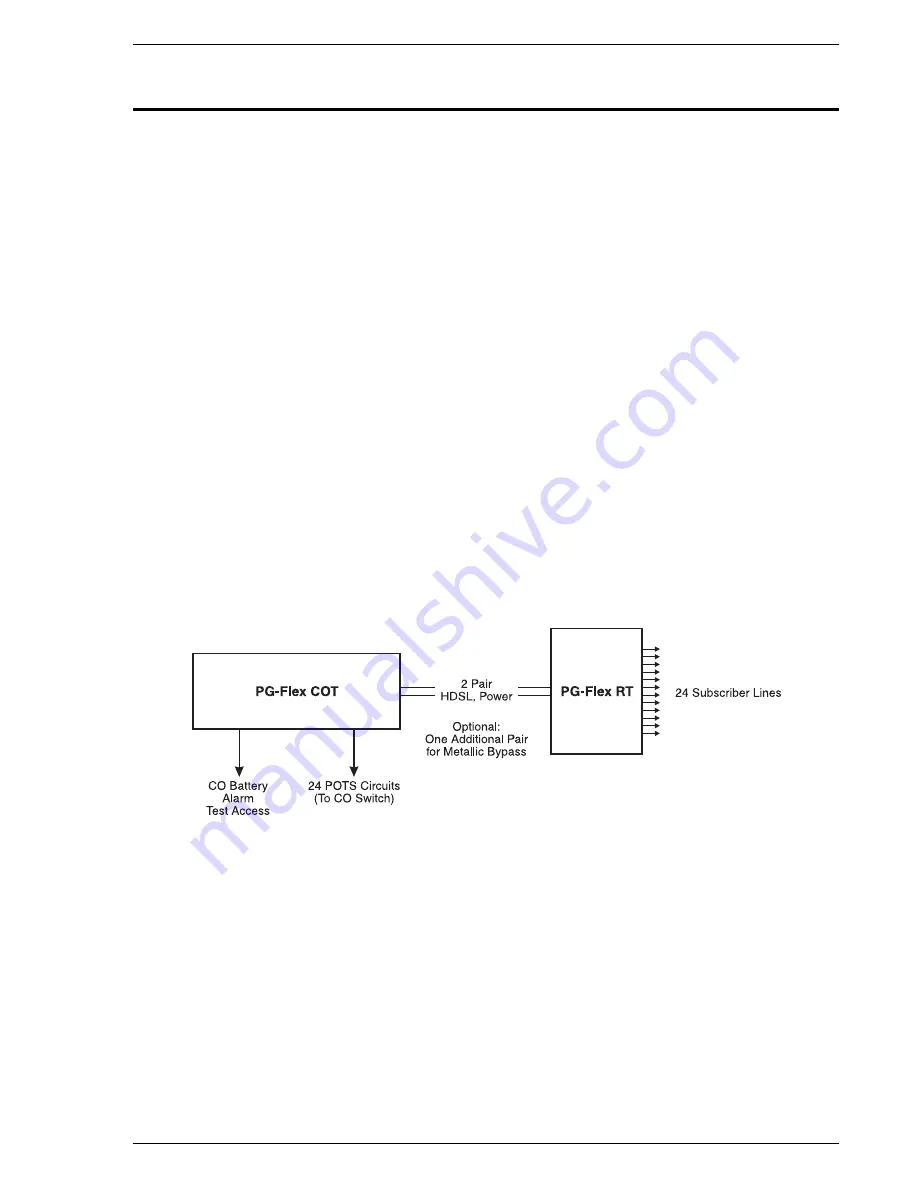
Revision 01
February 24, 1998
Section 363-712-131-01
PG-Flex FLL-712 List 3A
PairGain Engineering - Plant Series
Page 5
B. FUNCTIONAL DESCRIPTION
4. Applications
4.1
Overview.
PG-Flex is a small-capacity, universal subscriber carrier system supporting up to
24 DS0 channels including both Plain Old Telephone Service (POTS) and Integrated Services Digital
Network (ISDN) services. The system is based on HDSL transmission technology. Remote power is
supplied from the Central Office (CO).
A PG-Flex system is comprised of one line unit and one (or more) channel units at both the CO and
the RT (Figure 2). Line units and channel units can be hot-swapped without affecting other systems
in the same shelf. The POTS channel units use a Pulse Code Modulation (PCM) encoding scheme
that allows high speed modem and group 3 facsimile operation on all channels.
The CO-side of a PG-Flex system mounts into a COT shelf and supports up to four systems. An
alarm unit or Pair Gain Test Controller (PGTC) interface unit (common to all systems installed in the
shelf) provides an interface for maintenance alarm relays and metallic access to the remote
subscriber lines.
The remote side of a PG-Flex systems mounts into an FRE-765 RT enclosure. The RT enclosure
supports one system, which includes one line unit and up to three channel units. The channel units
must be the same type of card as the channel units installed at the CO.
PG-Flex uses HDSL transmission technology over two unconditioned copper pairs. Power is
supplied from the CO to the RT over the HDSL transmission lines. The maximum distance from the
CO to the RT is 12.3 kft (3.7 km) using 24 AWG cable (0.5 mm).
Figure 2. Typical PG-Flex Configuration
4.2
HDSL Transmission.
PG-Flex uses HDSL transmission technology between the COT and RT.
This technology provides up to 24 DS0s, plus signaling, over two copper pairs without using
repeaters, loop conditioning, or pair selection. Adaptive equalization, scrambling, and a four-level
2B1Q line coding scheme increase range and minimize crosstalk.
The line interface is a two-pair, 784-kbps full-duplex 2B1Q transmission format. The dual HDSL
lines provide 24 channels at 64-kbps, with signaling and an operations channel for management
control. The signal characteristics on the carrier pairs comply with TR-NWT-001210, Generic
Requirements for High-bit-rate Digital Subscriber Line (HDSL) Systems.
Summary of Contents for PG-Flex FLL-712
Page 46: ......








































